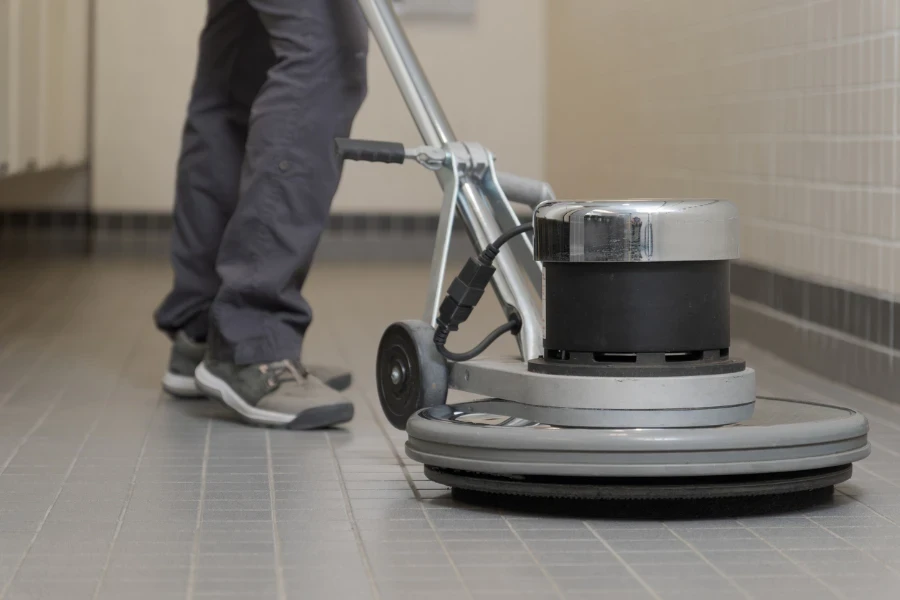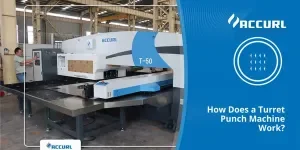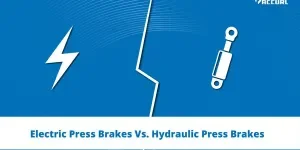In 2025, the floor sweeper market continues to expand with innovations in automation and eco-friendly options. This article provides an in-depth analysis of key factors in selecting the ideal floor sweeper, offering valuable insights for professional buyers to make informed decisions.
Table of Contents:
-Market Overview: Global Floor Sweeper Industry in 2025
-In-Depth Analysis of the Floor Sweeper Market
-Key Factors When Selecting a Floor Sweeper
-Enhancing Efficiency with Advanced Features
-Ensuring Durability and Build Quality
-Conclusion
Market Overview: Global Floor Sweeper Industry in 2025

The global floor sweeper market has shown significant growth, reflecting the increased demand for automated and efficient cleaning solutions across various sectors. As of 2024, the market was valued at approximately $5.24 billion and is projected to reach $8.25 billion by 2030, growing at a CAGR of 7.7%. This growth highlights the importance of floor sweepers in maintaining hygiene and cleanliness in commercial, industrial, and residential spaces.
North America and Asia-Pacific lead the market, with notable contributions from the U.S. and China. The U.S. market was estimated at $1.1 billion in 2023, while China is forecasted to grow at a 10.1% CAGR, reaching $1.5 billion by 2030. These regions benefit from rapid urbanization, stringent cleanliness standards, and significant infrastructure investments. The adoption of advanced technologies like automation and IoT in floor sweeper equipment is particularly strong, driving further growth.
Walk-behind floor sweepers dominate the market, expected to reach $2.9 billion by 2030 with a CAGR of 6.5%. Ride-on sweepers and robotic variants are also gaining popularity, particularly the latter due to AI and machine learning integration. The rise of battery-operated sweepers, which held the largest market share in 2023, reflects a shift towards eco-friendly and energy-efficient cleaning solutions.
In-Depth Analysis of the Floor Sweeper Market

The floor sweeper market is dynamic, driven by technological advancements, changing consumer preferences, and regulatory updates. Key performance benchmarks include operational efficiency, battery life, ease of use, and maintenance. The integration of IoT for predictive maintenance and real-time monitoring has become a significant trend, enhancing performance and reliability.
Major players such as Tennant Company, Nilfisk Group, and Alfred Kärcher SE & Co. KG lead the market. These companies focus on innovation, introducing products with features like automated navigation, enhanced brush designs, and water-saving technologies. Rising labor costs and increased investments in smart city projects also influence the market, driving demand for automated cleaning solutions.
Consumer behavior is shifting towards sustainable and eco-friendly cleaning practices, evident in the growing demand for battery-operated and robotic floor sweepers. Online sales through e-commerce platforms are rising, making it easier for consumers to access a wide range of products.
Recent innovations include autonomous floor sweepers with AI-driven navigation systems, capable of operating in complex environments with minimal human intervention. These innovations enhance cleaning efficiency and reduce operational costs. The product lifecycle involves extensive R&D, followed by rigorous testing and continuous improvements based on user feedback.
Digitalization plays a crucial role, with manufacturers using data analytics to optimize product performance and customer satisfaction. Increased awareness of hygiene and cleanliness, especially after global health crises, drives demand for advanced cleaning solutions. Customer pain points, such as high initial costs and compatibility issues with different floor types, are being addressed through targeted innovations and cost-effective models.
Brand positioning strategies focus on highlighting advanced features, sustainability, and overall value. Differentiation involves offering specialized products for sectors like healthcare, retail, and hospitality. Niche markets, including small-scale commercial and residential segments, are targeted with compact and affordable floor sweeper models.
Key Factors When Selecting a Floor Sweeper

Choosing the right floor sweeper for commercial or industrial applications involves understanding various factors that can significantly impact performance and efficiency. Below are critical considerations that should guide your selection process.
Types of Floor Sweepers
Understanding the different types of floor sweepers can help you select the best unit for your specific needs. There are several types available, each designed for particular applications.
Carpet Sweepers
Carpet sweepers are ideal for cleaning carpets and rugs in commercial settings. They are equipped with brushes that effectively lift dirt, debris, and dust from carpeted surfaces. These sweepers are lightweight and easy to maneuver, making them convenient for maintaining carpeted areas in offices, hotels, and retail spaces.
Magnetic Sweepers
Magnetic sweepers are designed to pick up metal debris from floors, making them essential for environments where metal shavings, nails, or screws are common. These sweepers use powerful magnets to attract and collect metal particles, ensuring a safe and clean workspace. They are commonly used in manufacturing facilities, construction sites, and warehouses.
Ride-on Sweepers
Ride-on sweepers are large, heavy-duty machines suitable for cleaning expansive areas quickly and efficiently. These sweepers are operated by a driver who sits on the machine, allowing for comfortable and convenient cleaning of warehouses, parking lots, and industrial facilities. Ride-on sweepers are equipped with wide cleaning paths and powerful suction capabilities to remove dirt and debris effectively.
Walk Behind Sweepers
Walk-behind sweepers are compact and versatile machines that are manually operated by a user walking behind the unit. These sweepers are suitable for cleaning smaller to medium-sized spaces such as retail stores, restaurants, and workshops. They are easy to maneuver and navigate through narrow aisles and tight spaces, making them practical for various commercial environments.
Performance and Functionality
The performance and functionality of a floor sweeper are crucial to ensuring efficient cleaning. Consider the following aspects:
Cleaning Path Width
The width of the cleaning path is a significant factor in determining how quickly a sweeper can clean an area. A wider cleaning path allows for more surface area to be covered in a single pass, reducing cleaning time. For example, the Bissell Commercial BG9100NM has a 9 1/2″ cleaning path, suitable for both hard and carpeted floors.
Power Source
Floor sweepers can be battery-powered, corded electric, or manual. Battery-powered sweepers offer the advantage of cordless operation, providing greater mobility and ease of use. However, they require recharging and have limited run times. Corded electric sweepers offer consistent power but are restricted by the length of the power cord. Manual sweepers are cost-effective and environmentally friendly but require more physical effort to operate.
Dust Control Systems
Advanced dust control systems are essential for maintaining a clean environment. These systems capture and contain dust particles during the sweeping process, preventing them from circulating in the air and settling back onto surfaces. This is particularly important in environments where air quality is a top priority.
Design
The design of a floor sweeper can influence its ease of use and overall appeal.
Ergonomic Design
Ergonomic design features, such as adjustable handles and swivel grips, enhance user comfort and reduce fatigue during prolonged use. For instance, the Carlisle Duo-Sweeper 3639914 has a soft swivel handle grip ergonomically designed for comfort and ease of use.
Low Profile Design
A low-profile design allows sweepers to clean under furniture, tables, and other obstacles easily. This feature is particularly useful in environments with many obstructions, ensuring thorough cleaning without the need for moving heavy furniture.
Technical Specifications
Understanding the technical specifications of a floor sweeper is essential for selecting a unit that meets your specific needs.
Brush Type and Configuration
Floor sweepers can have single, dual, or triple brush configurations. Single brush sweepers are compact and maneuverable, making them perfect for small spaces or tight corners. Dual brush sweepers are designed for heavy-duty applications and larger areas, while triple brush sweepers provide the most powerful and efficient cleaning for commercial settings with heavy debris accumulation.
Debris Capacity
The size of the dust bin or debris hopper determines how much dirt and debris the sweeper can hold before needing to be emptied. Larger debris capacities reduce the frequency of emptying, increasing overall productivity. For example, the Choice 9″ Single Brush Floor Sweeper has a dual bin design that provides superior dirt capacity.
Price Range and Budget
The price range and budget are important considerations when selecting a floor sweeper. Prices can vary significantly based on the type, features, and brand of the sweeper.
Entry-Level Models
Entry-level models, such as the Choice 9″ Single Brush Floor Sweeper, are economical and efficient, typically priced under $50. These units are suitable for light-duty cleaning tasks and small spaces.
Mid-Range Models
Mid-range models, like the Rubbermaid FG421288BLA Executive Series™ Single Brush Floor Sweeper, offer a balance of performance and affordability, priced between $50 and $150. These sweepers are ideal for medium-duty applications and can handle a variety of debris types.
High-End Models
High-end models, such as the Bissell Commercial BG9100NM Cordless Electric Single Brush Floor Sweeper, are priced above $150 and offer advanced features, superior build quality, and enhanced performance. These units are suitable for heavy-duty applications and large commercial spaces.
Enhancing Efficiency with Advanced Features

Incorporating advanced features in floor sweepers can significantly enhance their efficiency and usability.
Onboard Charger
Opting for a floor sweeper with an onboard charger can streamline the charging process and ensure that the sweeper is always ready for use. This feature eliminates the need for additional charging equipment, making it a convenient and practical choice for busy commercial environments.
Rechargeable Battery
Many modern floor sweepers are powered by rechargeable batteries, offering the advantage of cordless operation and increased mobility. Rechargeable batteries provide extended run times, allowing for uninterrupted cleaning sessions without the constraints of power cords. Additionally, they are environmentally friendly and cost-effective in the long run.
Magnetic Features
Some floor sweepers are designed with magnetic features that enable them to efficiently pick up metal debris such as nails, screws, and other small metallic objects. This capability is particularly beneficial for businesses in industrial settings where metal debris poses a safety hazard.
Ensuring Durability and Build Quality

Durability and build quality are critical factors in ensuring the longevity and reliability of a floor sweeper.
Construction Materials
Floor sweepers constructed with durable materials such as galvanized steel and tough ABS plastic are more likely to withstand the rigors of daily use in commercial settings. For example, the Rubbermaid FG421288BLA Executive Series™ Single Brush Floor Sweeper is made of durable galvanized steel and ABS plastic, ensuring long-lasting performance.
Brush Rollers and Blades
High-quality brush rollers and blades are essential for effective sweeping and long-term durability. Sweepers with laser-balanced brush rollers and titanium bushings, like the Bissell Commercial BG9100NM, ensure longevity and consistent performance.
Conclusion
Selecting the right floor sweeper for your business involves careful consideration of various factors, including the type of sweeper, performance and functionality, design, technical specifications, price range, and advanced features. By understanding these key factors, you can make an informed decision that meets your specific cleaning needs and ensures efficient and effective cleaning results.



